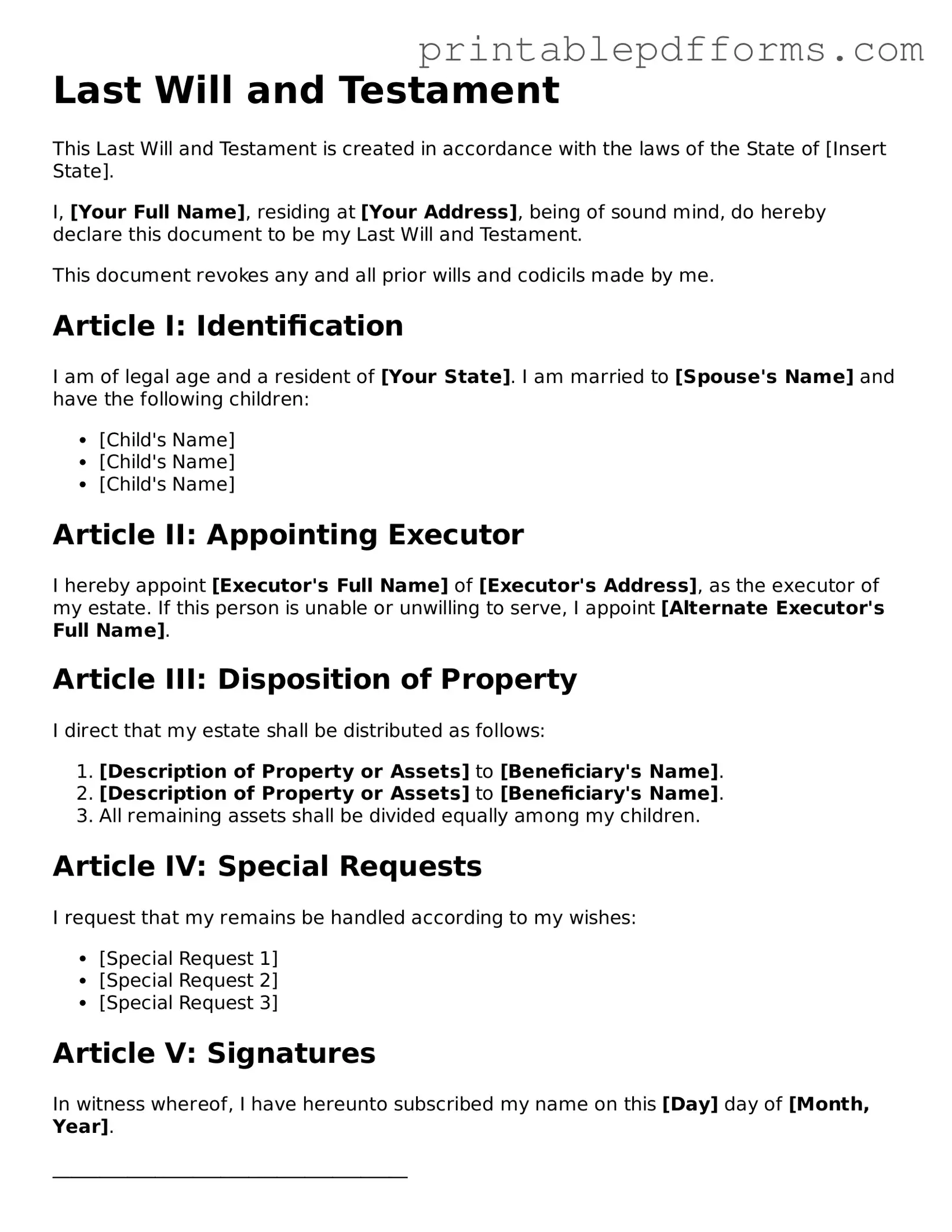Last Will and Testament
This Last Will and Testament is created in accordance with the laws of the State of [Insert State].
I, [Your Full Name], residing at [Your Address], being of sound mind, do hereby declare this document to be my Last Will and Testament.
This document revokes any and all prior wills and codicils made by me.
Article I: Identification
I am of legal age and a resident of [Your State]. I am married to [Spouse's Name] and have the following children:
- [Child's Name]
- [Child's Name]
- [Child's Name]
Article II: Appointing Executor
I hereby appoint [Executor's Full Name] of [Executor's Address], as the executor of my estate. If this person is unable or unwilling to serve, I appoint [Alternate Executor's Full Name].
Article III: Disposition of Property
I direct that my estate shall be distributed as follows:
- [Description of Property or Assets] to [Beneficiary's Name].
- [Description of Property or Assets] to [Beneficiary's Name].
- All remaining assets shall be divided equally among my children.
Article IV: Special Requests
I request that my remains be handled according to my wishes:
- [Special Request 1]
- [Special Request 2]
- [Special Request 3]
Article V: Signatures
In witness whereof, I have hereunto subscribed my name on this [Day] day of [Month, Year].
______________________________________
[Your Full Name], Testator
Witnesses
We, the undersigned witnesses, hereby declare that the Testator appeared to us to be of sound mind and under no undue influence. We sign our names as witnesses in the presence of the Testator:
______________________________________
[Witness 1 Name], Address: [Witness 1 Address]
______________________________________
[Witness 2 Name], Address: [Witness 2 Address]
